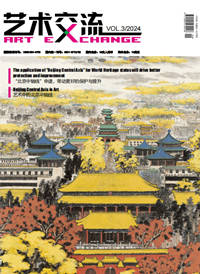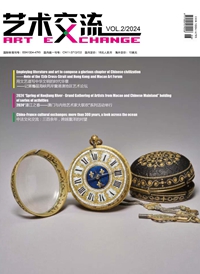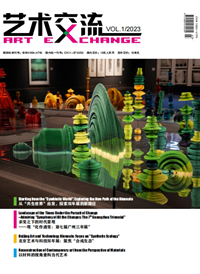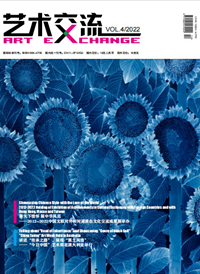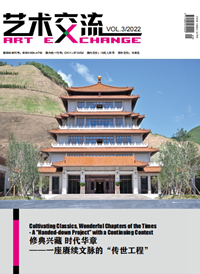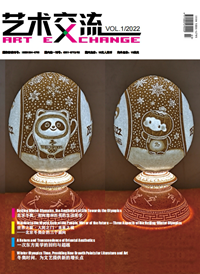
Islamic blue-glazed oil lamp

Ceramic phoenix-pattern oil lamp of ancient Rome

Scene of Red House

It appears to be empty after the oil lamp is “plundered” from the cabinet
The longing for York is entirely due to the temptations inspired by DING Ning’s introductory words, saying that York is full of antiques and mostly very cheap. At the invitation of Professor Michael, director of the Art History Department at York University in this winter, we went to York University to give lectures after flying from Beijing to Manchester followed by trains to York. After arriving in York and getting off the train, my first feeling when seeing the York station was the genuine definition of the old imperialism and the Sun-does-not-set Empire, everything is well explained. Eye-filled steel frame and structure revealed the history and glory, the extraordinary quality is reflected in being old but undefeated, aged but not decayed after 140 years with full functions, it witnessed the three-century-long social changes of York and the United Kingdom since the 18th century. When the New York City emerged in the United States and became the most modern city in the world today, the railway station thatwas built in 1873 and put into use in 1877 remains the same. The sun of the Empire has set and rises in the United States. However, as one of England's greatest Victorian-style buildings, it used to be the largest train station in the world, and the demeanor of old gentleman remains unchanged.
There are many places worth visiting in York. Our visit encountered the approaching of Christmas, the ancient city was full of visitors with longing dreams. I still wanted to find out those antiques with my own eyes. Under DING Ning’s experienced guidance, we went into a building, a very famous local red house, which was not noticed as we were in a hurry. It is close to the famous cathedral, not far from the commercial street and even closer to the train station. Many people should have passed here in visiting the city, only few entered and those like us hunting for treasure should be fewer. If not due to its special color, the two-storey building is really not so striking. Though the Antique Centre is most visible on the walls between the first and second floor of the main façade, however, how many people would be interested in the Antique?Climbing a few steps, it naturally led me to a room to the right with a glance at a few pieces of ancient Roman oil lamps on the cabinet. What a relief, I won’t return empty-handed. Each piece of antiques had a price tag clearly marked its identity and price, and some important antiques even had labels of that of museum exhibits, detailing related information, such as the era, material, circulation and others. The room was full of cabinets, each containing different antique or old things, some of them were from Asia, including China’s antiques and pottery figurines, which were very ordinary. Of course, I was not there for Chinese antiques. Each room there was not large, one after another, even the aisles were full of antiques, such as jewelry, ornaments, old clocks, tapestries, furniture, decorations and others. It was hard to tell the exact number of antiques in the store, anyway, almost everything, all the miscellaneous items, about 30,000 in number. The items here were not like those high-end exhibits at Yorkshire Museum, but in a large portion of a wide variety, many could not be found in museum. Therefore, here could be regarded as a supplement to the museums. A considerable portion of these miscellaneous items were evidence of York's history, a creation of history and culture. Items here for sale were from the ancient pottery to the oil lamps and statues of ancient Roman era, from daily necessities to handicrafts, really dazzling. In the case of antiques, these were not unearthed relics that have been scientifically excavated but were related to tombs, ruins and etc. Some of them were of great historical and artistic value, which I have always pursued. For example, the pottery lamp of the Palestinian Iron Age (1000-550 BC) seen at the Metropolitan Museum of Art and the New York Jewish Museum, the earliest lamp of European civilization that shaped a bit like a clam shell. Light twist had a special treatment to make it more practical, but what I saw was my first time in the market.
The diversity of cultural relics is out of people's imagination. People here would find a lot of fun and interesting contents, for instance, a cabinet is full of paintings and decorations and other related objects, there are portraits painted in ivory, small decorative painting and some small watercolor and so on.The level of the painting and the degree of sophistication completely belong to that of the museum. And these were usually submerged in museums because they were too small. These were all works of art that are related to the old-style imperialist lifestyles of the past. The content was linked to their time and the way of life, aesthetic traditions, and artistic trends in their countries. Undoubtedly, their artistic creation and the public's aesthetic interest were also linked. Therefore, those small portraits were drawn on some special materials, such as ivory. Its portability features also reflected the characteristics of the spread. Perhaps there might be many love stories here, many related to family history, and if taken together, we can see British traditional culture and cultural traditions, in particular, some special content in the family heritage. They have been passed down through means of art. Although some families today have dispersed, and some might decline already, yet what we feel is the sadness of Swallows of Previous Royal Families Fly into Home of Commoner when these works of art related to the past court, palaces, castles and the like have flowed into the private sector. There were stories and twists and turns as they flow to the private sector, providing a rare resource for private collection or as the content of special collections. Of course, such a resource was displayed today in the way of the "Curiosity Room" or "Cabinet of Curiosities", people would feel the vicissitudes of history.
This was by far the most unique and comprehensive antique shop, reminding me of the "Curiosity Room" or "Cabinet of Curiosities" of the museum’s origin. In the 16th century and the Jiajing period of the Ming Dynasty, many Chinese literati were searching for antiques and communicating and admiring each other through the methods of the garden gathering, thus bringing a unique way of making friends between the literati and the scholars. In the West, with the geographic discovery and the beginning of the Renaissance, the European world began its exploration of mysterious land and magical treasures. At that time, there was a popular double-door cabinet at home amongst aristocrats in the royal family and ordinary people, while various rare things gathered were put in this special cabinet. The collectors refer to these cabinets as "Curiosity Room" or "Cabinet of Curiosities", which are often viewed in museology as privatized display and showing cabinets as the early form of museum, the beginning of the private collction to the public. In historical development, the museum as a civilized bearing, no matter the collection, display or others, is a record of human civilization. This showcase of flamboyant possession and display of lust turned into a publicoriented entity, the museum open to the public, in China until the early 20th century. However, in ancient China, no later than the 16th century, the study from the imperial palaces to the literati always had a cabinet of Duobao, which is, in fact, also a collection of masters, revealing issue of showing off the wealth.
Each showcase here was associated with a collector or seller. Each has a different category from one another. Obviously, these antiques or second-hand items from different collectors or sellers were all concentrated in this building, which helped it earn the name of the so-called "center", which only has a history of 30 years, not long enough like that of the building. It was located at the Harrogate of the Yorkshire in 1986 at the beginning and moved to this red house on the summer of 1999, justifying the success of the previous operation. Here is sale home of antique collectors, also the place for exchanging. Today's antiques center is not only a collection of scattered collectors so that we all had our own places to showcase the collection and exchange, but also an institution in the overall form for its customers. This is a bit like the miniature version of the antique city, is to those antique city of each house or a few houses into a miniature shop. Therefore, when everybody who is interested in antiqueor second-hand junk goes in and does not actually need to walk through every showcase, he may have to visit one or more showplaces of his own interest. Because they are actually from the systematic collection of collectors as it is reflected in the completeness of the collection for a particular breed and the particular perspective or method of such collection of private sector.
The red house, the antique centre, had 10 rooms in total. After climbing two more steps and going through an aisle, there was a room. A few metal kerosene lamps in the showcase could be found upon entering the room, unlikely for civil use. Such lamps of different shapes were on each floor. In addition to the oil lamps, there were signs, tools, hats and others related to the railway, it should be counters for railway artefact. The metal oil lamp was for the use of railway, including general lighting, locomotive lighting and signal lighting. Obviously, it was the first time I saw so many lights related to the railway. Without any hesitation, all 16 items in the cabinet were "purchased completely", which will constitute a chapter in the railway kerosene lamp of my future kerosene lamp museum, and it really came as a surprise. Facing such large amount, I was advised to buy a suitcase to contain all these lamps before leaving York.
The following itinerary was to visit the Railway Museum, Yorkshire Museum, Castle Museum, Museum of Military Art, York Art Museum etc. A small city actually has so many unique museums, no wonder it ranked the second as the most famous tourist city after London in the United Kingdom, also the second city with so many tourists London. York, as a historical and cultural town, is the best place for nostalgia surrounded by the ancient city walls as every moment here breathed the ancient taste of the air. There is no shortage of other antique shops on the street, and one of them is well-matched. However, it was in the atmosphere of a commercial street, and the quality of those antique and second-handed items displayed on the street was far inferior to that of the red house.
A few days later, I bought a big suitcase and went to the red house. As the staff was packaging, I went into the room again, undoubtedly that the railway cultural relics counters were as filled as before, but the quality was far lower than those I had previously bought. Going upstairs, I inadvertently walked into a house full of kerosene lamps. Amongst them, one piece was a hand-crafted brass oil lamp, double twists, it must belong to a large family. That technique was marvelous and I must take it. I asked the staff to move it from above, and it was really heavy. It was 5.7kg after I returned home weighing, the lamp cover was 73cm and the main body was 48 cm. It seemed I had to carry it by hand. For the rest, it was clear that I could not take them all and they could only wait for the next time. Undoubtedly, they would wait for me.




